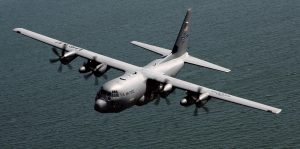
Meteorologists use a variety of tools and technologies to create weather forecasts, one of which is aircraft. There are certain types of airplanes designed specifically to track weather formations. Known as storm-tracking airplanes, they allow meteorologists to make more accurate and timely weather forecasts, which helps to save lives. Here are five facts about storm-tracking airplanes.
#1) Target Hurricanes and Tropical Storms
Most storm-tracking airplanes target hurricanes and tropical storms. When a hurricane or tropical storm is detected, these highly specialized aircraft will fly into the center or “eye” of it. Once inside, storm-tracking airplanes will gather valuable atmospheric data, such as wind speed, atmospheric pressure, temperature and humidity. Meteorologists will then use this data to refine their weather forecasts.
#2) Fly Lower Than Commercial Jets
Storm-tracking airplanes fly at a lower altitude than commercial jets. The average cruising altitude for commercial jets is 30,000 to 40,000 feet. At this altitude, commercial jets encounter less resistance due to the thin, which improves their fuel efficiency. Storm-tracking airplanes, however, typically fly at just 500 to 10,00 feet so that they can enter storms and retrieve accurate atmospheric data.
#3) Improves Weather Forecasting By 15%
According to one study, storm-tracking airplanes improve the accuracy of weather forecasting by 15%. They provide critical data that’s not available through traditional satellite and ground-based detection systems. Meteorologists still use satellites and ground-based systems, but they leverage storm-tracking airplanes to further refine and improve their forecasting efforts.
#4) The NOAA Operates Storm-Tracking Airplanes
The National Oceanic and Atmospheric Administration (NOAA) has a fleet of storm-tracking airplanes, which includes two WP-3D Orion aircraft and a single Gulfstream IV-SP aircraft. The former is a modified version of the P-3 Orion, whereas the latter is an upgraded version of the Gulfstream GIV. The NOAA, of course, is just one of many organizations that uses storm-tracking airplanes, and different organizations use different types of aircraft.
#5) Multiple Data Collection Methods
How do storm-tracker airplanes like the WP-3D Orion and Gulfstream IV-SP aircraft collect atmospheric data exactly? They use a variety of methods, including dropsondes, doppler and SFMR. Dropsondes consists of small sensors that are released directly into the eye of storms. Doppler radar, on the other hand, is a specialized radar system designed for storms. Finally, SFMR is an instrument that senses microwave radiation. As storms form and move over the ocean, foam will develop on the surface of the sea, which releases microwave radiation.



